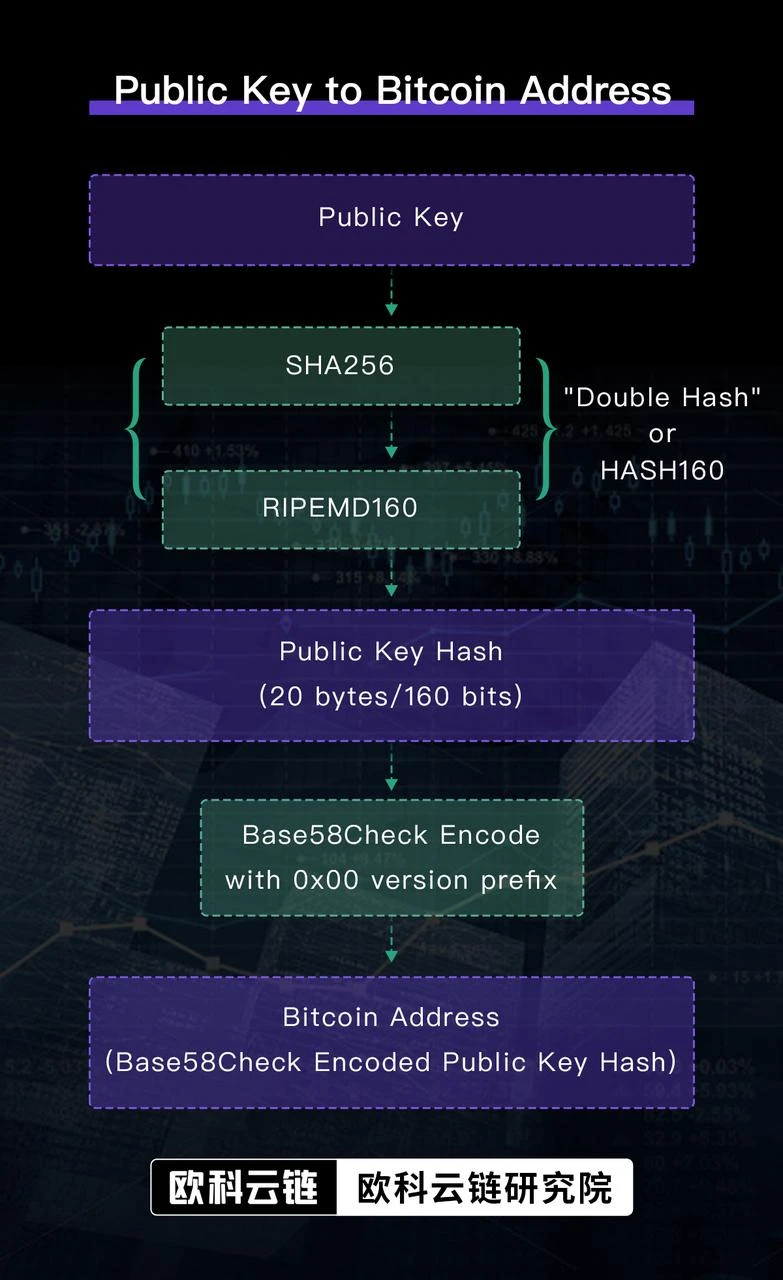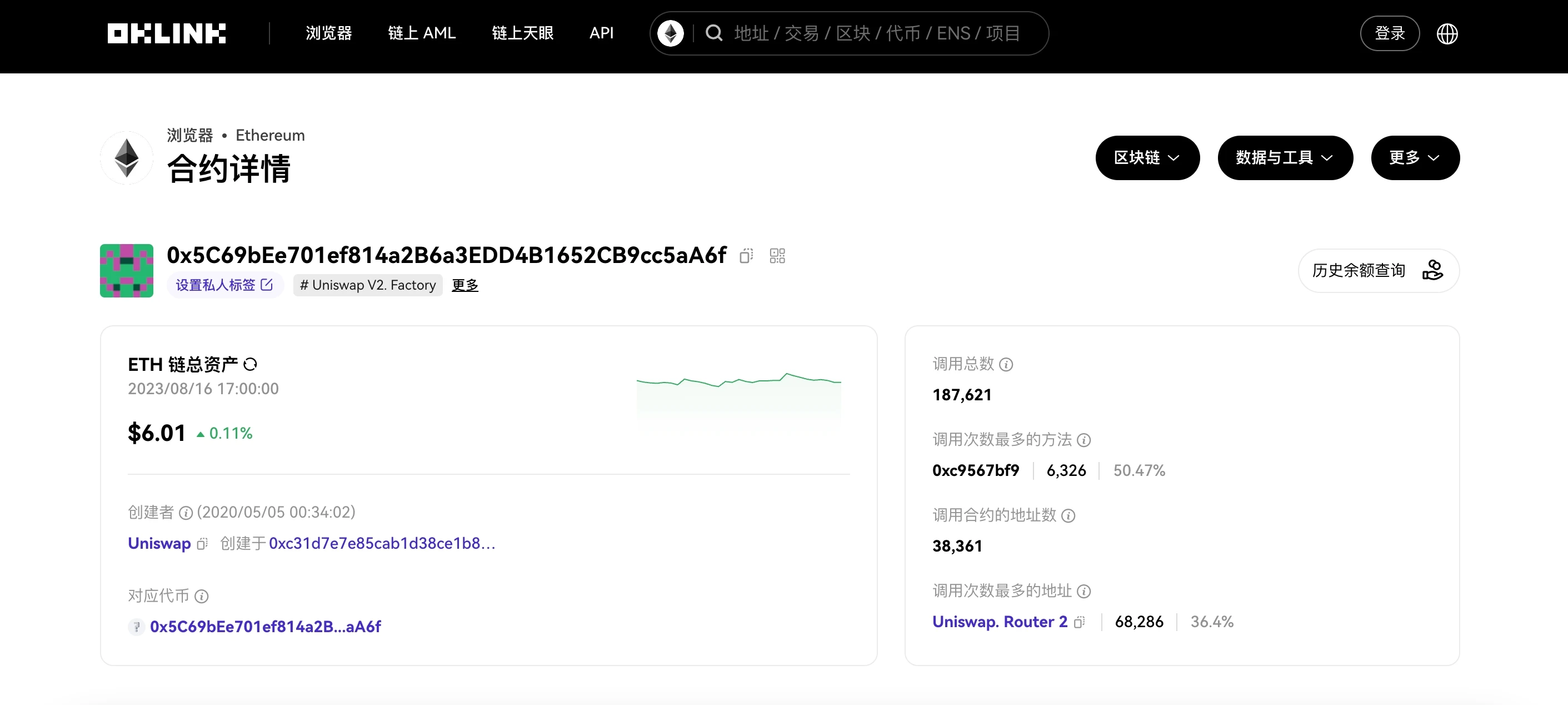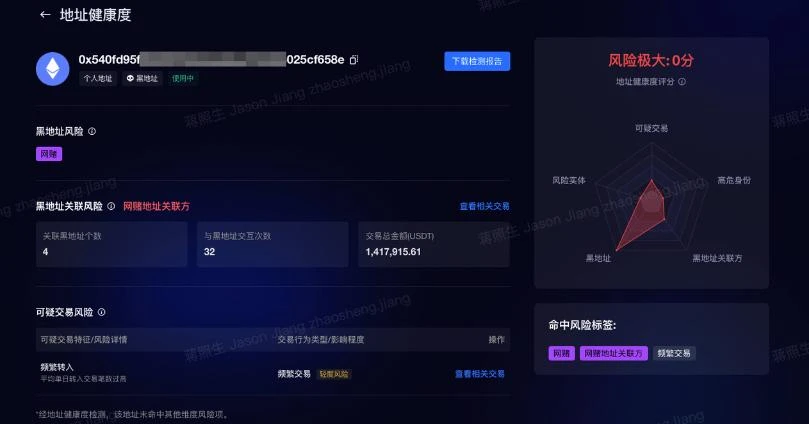Original Author: Jason Jiang
In the world of blockchain, besides transactions, there is another fundamental element: addresses. In the Onchain AML compliance technology solution recently launched by OKLink, there is also a concept closely related to blockchain addresses: KYA (Know Your Address).
So, what exactly are blockchain addresses used for? Why do we need to "know our address"?
1. What can we do with blockchain addresses?
Addresses are the most basic yet crucial concept in the blockchain world. All interactions in blockchain networks start with addresses and end with addresses. Whether it's a simple transfer payment or a complex transaction using DeFi protocols, addresses are indispensable.
Common blockchain addresses are strings of numbers and letters derived from public keys or scripts through encryption algorithms. The following image shows the process of generating a Bitcoin address (excerpted from "Mastering Bitcoin"):

Addresses in different blockchain networks have subtle differences, such as Bitcoin addresses mostly starting with "1," while Ethereum addresses start with "0x." However, these addresses can all be considered as unique identifiers and groupings of on-chain assets.
The initial function of blockchain addresses is to receive, send, and store various virtual assets. With the development of on-chain applications such as DeFi, NFT, and DID, the application scenarios of blockchain addresses are becoming increasingly widespread:
- When interacting with various Dapps on-chain, we need to use addresses to authorize access and usage rights.
- When creating smart contracts or participating in on-chain voting, we need to use addresses for identity verification.
- When querying our own or others' on-chain transaction records, we also need to use addresses in blockchain explorers for queries.
……
Addresses are the keys to open the on-chain world and the cornerstone of building the future Internet. Perhaps one day in the future, when we encounter situations such as job hunting or other scenarios where we need to introduce ourselves to others, simply presenting our blockchain address will suffice: because the address has already recorded all our past and present on-chain activities, and is truly trustworthy.
2. What are the differences between on-chain addresses and bank accounts?
Due to the basic functionality of blockchain addresses being somewhat similar to bank accounts, people often make comparisons between the two. However, in reality, aside from other functional differences between the two, the biggest difference between blockchain addresses and bank accounts lies in the aspect of real-name registration.
Each bank account corresponds to an individual or institution under real-name registration, while blockchain addresses do not have this one-to-one correspondence:
Firstly, in the blockchain world, a single address does not necessarily point to a single user/institution; it may represent a group of people or multiple institutions (such as multi-signature addresses), or even ultimately point to a smart contract (note: blockchain addresses include externally owned account addresses (EOA) and smart contract addresses).

The above image shows the factory contract address of Uniswap V2 (source: OKLink).
Secondly, when opening a bank account, we must complete the step of real-name authentication, while when generating a blockchain address, no real-name information needs to be provided—this is not achievable in the banking system.
It is precisely because of this low threshold for blockchain addresses that the financial systems developed in the blockchain ecosystem are considered by more users and institutions to be more inclusive and open models for financial development, believing that they can benefit the long-tail customer base that cannot be served by traditional financial institutions.
However, this anonymous and low-threshold address system has also brought risks and challenges to the blockchain ecosystem: an individual can freely generate tens of thousands of blockchain addresses and then, with the help of the blockchain network and other privacy-enhancing technologies, use these addresses to receive and process funds generated in fraudulent activities such as pyramid schemes, making it difficult to trace and investigate in the on-chain world.
3. How can you "know your address"?
As an ordinary investor, perhaps you have never thought of using your address to engage in these risky activities, but you may unknowingly be involved in them: because there is no way to guarantee that all the addresses you interact with on-chain are healthy and safe.
So, how should we respond? The KYA (Know Your Address) Core in the Onchain AML compliance solution provided by OKLink may be able to help. KYT Core is a big data risk assessment tool that identifies, analyzes, measures, and categorizes the risk characteristics of on-chain addresses. Ordinary users can conduct preliminary risk screening of the counterparty's address before transactions and take targeted measures based on the corresponding risk characteristics. Of course, users can also constantly check the health of their own addresses to ensure the security of their on-chain funds.
For example, with the Ethereum address in the image below, if a user utilizes the address health function of OKLink KYA Core, they will find that it poses a significant risk, possibly related to gambling addresses. In such a situation, would you still choose to transact with it?

In addition to individual users, institutional users can also use OKLink's KYA Flex product to meet risk control and compliance needs. Institutional users can customize the risk scoring dimensions and hit rules of blockchain addresses according to their actual demands and compliance needs, ensuring both risk control and compliance, as well as the user experience and interpretability of risk scoring rules.
Whether it's KYT Core or KYA Flex, they both rely on OKLink's underlying extensive address label library. Similar to personal characteristics such as height, weight, and hobbies, address labels are also expressions of the characteristics of blockchain addresses, allowing ordinary people to understand the various information behind addresses. As of August 2023, OKLink has accumulated over 3.4 billion address labels and nearly 70 million black-gray address labels.
OKLink's Onchain AML compliance solution will soon release the next article: What is the relationship between DID and blockchain addresses?
免责声明:本文章仅代表作者个人观点,不代表本平台的立场和观点。本文章仅供信息分享,不构成对任何人的任何投资建议。用户与作者之间的任何争议,与本平台无关。如网页中刊载的文章或图片涉及侵权,请提供相关的权利证明和身份证明发送邮件到support@aicoin.com,本平台相关工作人员将会进行核查。




